Polestar, e-tron, Ioniq 5, EV6 top TC Auto Show
Filed under: Weekly test drives, Features, Autos
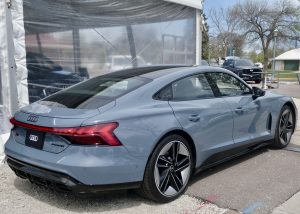
Audi’s e-tron GT led a variety of EVs available to test at the Twin Cities Auto Show, at the Minnesota State Fairgrounds through May 22.
By John Gilbert
If you own a car of any type, or a truck or SUV, you might be wondering what all the conjecture is about the cultural and sociological shift to electric vehicles (EV). It might be a few years until you make up your mind about EVs — or you could head to the Minnesota State Fairgrounds through Sunday to catch the final days of the 49th Twin Cities Auto Show, which is being held in the great outdoors.
Once there, you can find your way to the Electric (Vehicle) Neighborhood, where various manufacturers will have their latest prize EVs gathered amid the various displays of all manner of new cars and trucks. But if you’re curious about electric cars, that is the place to get a close-up look, and a brief test drive, in an EV of your choosing. Or several of them.
At the show’s media preview, we got the close-up look, and a special opportunity to take a few spins in some specific EVs of my choosing.
The first was one of the two most spectacular vehicles on the face of the earth — a Polestar 2. The second one was the Audi e-tron, my nomination for the most spectacular vehicle available. Both are sleek, ultra futuristic and luxurious, and both are pure electric vehicles (EV), which are the primary attraction at the 49th annual Twin Cities Auto Show.
They accelerated briskly, showing off their capabilities to go 0-60 in about 4 seconds, accompanied by the sound of …absolutely nothing. Of course, we were adhering to the strict limit of 20 mph on the nearly deserted fairgrounds streets. The Polestar 2 and the Audi e-tron clearly live up to all the publicity and promotion, and are reason enough to attend the show. They both are, however, over $100,000, so it might be wise to check them out with that in mind.
But many EVs are priced within the range of normal folks, and those vehicles, from Ford, Chevrolet, Hyundai, Kia, Volkswagen, on up to Jaguar are there for perusal. Some start below $40,000, which, with the possibility of government aid, and the certainty of rising gasoline prices, make them more of a potential alternative sooner rather than later.
The thought occurred to me, as we made the drive from Duluth to attend the media preview last Friday for the Twin Cities Auto Show, that the show might be the only function that truly benefitted by the COVID-19 pandemic. A year ago, nobody was anxious to go out and mix it up with a crowd of people that could spread that horrible disease, which still threatens us with assorted variants. The only way to keep the show going last year was to move it outside.
Out of desperation, the new vehicles were put on display last year at the Minnesota State Fairgrounds, on Snelling Avenue in St. Paul, and it worked so well the show’s organizers and dealerships decided to do it again this year, on purpose. The 49th annual runs through this weekend, ending Sunday, May 22nd.
There always have been good reasons to go to the show to evaluate future family vehicles where they can be compared to various others all in one location, but this year the show had gotten lucky with timing, because every car buyer is curious about the newest models, and particularly all the electric vehicles.
For example, we drove to the show in a new Chevrolet Equinox, an RS model, which is new for 2022, with trim and features. My older son Jack accompanied me, since he shoots photos and serves as my assistant for Newcarpicks.com. As I turned into the main entrance to the fairgrounds, and tried various streets searching for the media meeting place, called Electric Vehicle Neighborhood, I realized that as modern and up-to-date as the Equinox is, it, and all other conventional vehicles, seems old-fashioned next to the futuristic EVs being shown at the show.
The Twin Cities Auto Show has been an annual attraction in the Minneapolis Convention Center, and before that at the Minneapolis Auditorium, although weather can still resemble winter in the first week in March. We Minnesotans concede it can’t compares to the global caliber of the Detroit, Chicago, Los Angeles or New York auto shows, and those “big four” in the U.S. are small compared to the Frankfurt, Germany, show, or Geneva, or Paris, or Tokyo.
The Twin Cities show relies on local and regional dealers to bring their latest vehicles for display to help consumers compare various vehicles in one location. For that reason it was always worth attending.
The media types gathered at the preview didn’t seem too eager to check out the EVs the way we were, and after a catered batch of sandwiches and caramel rolls, they took their soundbites and departed, while Jack and I headed back to the accumulated EVs, with room to drive, rather than ride, around the proscribed course with professional driving instructor.
Gary Eick sat in the passenger seat and offered expert guidance and explanation. The great thing about these instructors is they also teach auto racing enthusiasts how to drive race cars at Brainerd International Raceway. I was just starting my career as a journalist and car enthusiast at the Minneapolis Tribune when BIR was built as Donnybrooke Speedway, and the drivers remembered me from those days. They also knew I had been road-testing and writing about new vehicles in an unbroken streak that now has reached 50 years. And counting.
Gary Eick was our personal guide, sitting in the passenger seat and offering valuable instruction about the varied driving controls, and warning us about how easy it is to go faster than you realize when there’s no sound emitted from your stepping on the gas.
The Polestar is built by Volvo under that name, as its new EV arm, and while various Volvos are now electric powered — including the official “Car of the Show” Volvo XC-90 Recharge — the Polestar 2 is already the latest version all-electric concept of Volvo’s Polestar 1, which has two electric motors at the rear, and Volvo’s 2.0-liter 4-cylinder supercharged and turbocharged gas engine to combine for 619 horsepower. But it costs $155,000, which means the company had to scale it back into the real world, and forward, at the same time.
The Polestar 2 has a comparatively reasonable sticker of around $50,000, with no gas engine, and your choice of single motor or dual motor. The single develops 231 horsepower and 243 foot-pounds of torque through front-wheel drive, and the two-motor puts out 408 horsepower and 487 foot-pounds of torque through all-wheel drive. Compared to the Polestar 1, which looks like an exotic sports car, the Polestar 2 is more of a streamlined luxury SUV shape for hauling people. Swiftly.
Next, we did a brief drive in the Audi e-tron. Audi makes various e-tron vehicles, but the most exotic are a pair of GT models — the GT and the RS GT. The RS e-tron T is the first vehicle brought into the U.S. by Audi Sport, the high-performance arm of the Ingolstadt, Germany, company. It has 637 horsepower and 612 foot-pounds of torque, and, of course, all-wheel drive. The look and luxury are unmatched, if you want a sports car that is really a 4-door sedan. Cost is out of sight at $139,900.
The Audi e-tron GT has “only” 522 horses and 472 foot-pounds of torque. It shares the same stunning body shape. Going down the scale, Audi also has the Sportback and a Q4 Sportback that are priced down into the low $40,000 range. The e-tron I drove was so luxurious and solid you almost forgot that the sound you hear is — nothing. All EVs share the silence of electric power operation.
The Jaguar i-Pace is a sleek electric SUV, and Ford had its Mustang Mach E, while Jeep had the Wrangler 4XE and Volkswagen had its ID.4 in the mix. Several sleek Mustang Mach-E models are available to test. Chevrolet has the Bolt, but it was kept back in the Chevrolet display. Mercedes and BMW also have EVs to show. Mitsubishi has its just-introduced Outlander on display in PHEV (Partial Hybrid Electric Vehicle) form. Virtually every booth has an array of hybrids, if not pure electrics, and some of those are exceptional.
I gravitated to the most mainstream of all EVs, the South Korean pair of Hyundai Ioniq 5 and Kia EV6. They share drivetrain technology, but look completely different, and the EV6 is about a foot longer, although the Ioniq 5 has about a 4-inch longer wheelbase. The Ioniq 5 looks more like some sort of futuristic transportation module next to the sleek Kia EV6 shape.
The EV6 has a choice of 167-horsepower rear-drive, or 320-horse AWD, while the Ioniq 5 power choices are 225-horse/258-foot-pounds rear drive, or AWD with 320 horsepower and 446 foot-pounds of torque.
The shape of the Ioniq 5 is completely different from the returning Ioniq (without the 5), and its melding and overlapping creases make it a masterpiece of artistic design. Such angular shaping has carried the Sonata and Elantra sedans to new heights, and I anticipate the Ioniq 5 will make that sort of impact on the EV market — especially starting out under $40,000 and reaching up to as high as $60,000, and with the advanced technology to provide nearly 300 miles of range, and a high-powered charge capability that will regain 85 percent capacity in about 20 minutes.
The auto show is arranged for the car booths and stands gathered near each other for ease in walking among them. Also, an array of fair food is being featured, so you can get your corn dogs or Sweet Martha’s Cookie fix right now, among other treats, and munch your way from display to display.
Adult tickets are $20, teenagers $5, and kids 10 or under free. Entry is through RAM Gate 16, and free parking is available in the Robin Lot, accessible via Hoyt Avenue off Snelling.
All sorts of sponsorship help makes the show a success, and when you open the front cover, you see a full-page ad to “Take on the world in style,” with a 2022 Chevrolet Equinox with all-new RS trim, from Heartland Chevy dealers. The one in the ad is red; ours for the week from the regional test fleet was glistening white.
As we headed for home, up Interstate 35, we enjoyed listening to the Twins and a couple of NHL Stanley Cup games on the satellite radio system, and our Equinox cruised effortlessly at 70 mph in smooth comfort. No, it wasn’t electric. Maybe next year, when my prediction is that the Twin Cities Auto Show will have made its outdoor, fresh-air presence a rite of spring that other auto shows will copy.
Chicago Auto Show renews hope in EVs, cars
Filed under: Weekly test drives, Features, Autos
By John Gilbert
CHICAGO, Ill.
There may be a better site for a revival than McCormick Place in Chicago, but it’s hard to think of a bigger one, particularly if it’s a revival of the nation’s auto show culture, which is showing signs of returning to normalcy with the currently running Chicago Auto Show, which will continue through this weekend and ends on February 21.
Auto shows took a beating, as did everything in this country, if not the world, and the common conjecture was that we may have seen the last of the major gatherings of the newest vehicles from all over the world in one large facility. Manufacturers have continued to overcome parts shortages and shipping woes and have moved onward and upward to meet the demands of a new world order, and the Chicago show is an example of our future driving concepts might shape up.
Perhaps the most significant change in tendencies is to move onward and upward from our consuming passion for all things SUV, and perhaps take a serious look at electric-powered vehicles. In Minnesota, major dealership spokesmen have tried to throw cold water on suggestions that automobiles might be shifting away from internal combustion powertrain toward electric motor operation. When you look into those dealer claims, however, you find that all of them are making huge profits selling big trucks and SUVs, and would just as soon leave the status quo where it stands.
But if you get the chance to visit the Chicago Auto Show — which happens to be the oldest and largest-attended of the major U.S. shows that also include Los Angeles, Detroit and New York — you will find large gatherings at virtually every stand as consumers try to get closer looks and more information about the futuristic-looking array of EVs.
But you’d better hurry. A quick flight or drive to Chicago for a weekend walk around at McCormick Place can be done in a day, but only through President’s day on Monday, then it will close up shop. As it is, we might call this year’s show “Chicago Auto Show Light,” because some manufacturers have stayed away, possibly worried that the COVID-19 pandemic could knock out another round of the auto show circuit.
All-electric cars dominate the South Exhibition Hall of McCormick Place, where along with looking closely at the vehicles on display, you might get in line for a short on-site run around the short cone-lined course laid out on the paved floor. The Kia EV6, the BMW iXM60 flagship, and various other EVs did more than just show off all angles of their vehicles.
Kia and its South Korean partner and benefactor Hyundai both displayed numerous hybrids and EVs. At the Kia display, you could examine the basic chassis, exposed with its full-width battery pack that fills the whole lower area of the floorpan between the axles. Hyundai, Kia’s South Korean partner, has the same drivetrain in its new 2022 Ioniq5 models. Their drivetrains have a range of between 270-300 miles, and will recharge a large percentage of it in 15-20 minutes.
Nearly every manufacturer has their latest electric vehicle on display, and some have cars on the mini-track to offer examples of what driving an electric car will be like, for those who haven’t had the experience yet of the swiftness and silence.
The show kicked off with media preview days on February 10-11, leading into the show, which runs through Monday, February 21. One of the luxuries is that you can get a room at the connecting McCormick Place Hyatt, which means you can walk from your room to the arena itself without going outside into what is predictably a cold, harsh and windy experience.
A number of prominent companies — Mercedes, Audi, Honda, Acura, Infiniti, Cadillac, Genesis, Porsche, Mazda, and Tesla, for example — were nowhere to be seen. Those who did put up displays were very limited in the presentations they offered. Curiously, several companies generously gave out the very neat little carrying bags into which you can stash dozens of press brochures you acquire on your rounds of a typical show, but Hyundai was the only one that offered an actual brochure to show off its many impressive new models.
Of course, the move to electric is arriving in a glancing blow from the popularity of hybrid powertrains, which run a little bit on electric and have gas engines to keep the power on while also recharging your battery pack, resulting in unusually high fuel economy.
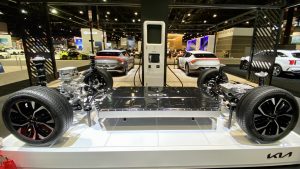
The LG Chem battery pack fits low and wide between the axles of Kia’s EV6, delivers nearly 300 miles of range and can recharge swiftly during a lunch stop.
The term “range anxiety” refers to the worry that your electric car might run out of juice before you get to either your destination or home — or at least a charging station where you can replenish its batteries. An ever-increasing number of battery companies and electric utilities are expanding almost by the week to place more and more charging and high-speed charging stations up, all around the country.
Here is a brief rundown of the new cars on display at Chicago’s show:
The new Corvette Z06 — the first Corvette with an engine lacking pushrods! It has a high-tech dual-overhead-cam, 5.5-liter V8 with 870 horsepower in the mid-engine machine. It is right next to Ford’s display with its original GT40 LeMans race car on a stand adjacent to the newest, and reportedly final, new Ford GT that looks like the old one grown up, with its mid-engine powertrain.
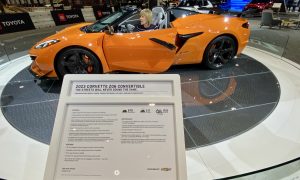
Historically a pushrod stalwart, the 2023 Corvette Z-06 will get a high-tech, DOHC 5.5-liter V8 with 870 mid-engined horsepower.
Of course, both Chevy and Ford have their latest offerings, and both have pure-electric full-size pickups on hand. Other eye-catchers are Lexus, with expanded versions of its flashy LC500 coupe and convertible. But after that, and the assorted Volkswagen Golf R and Arteon, plus new compact SUV fleet that includes the Taos, Hyundai and Kia were among the few stressing cars.
The focus on trucks has not diminished, of course. Ram held a presentation for its special-service debut of the fire department first-responder red pickup; Chevy showed off its new Silverado, which now includes a new electric version; Toyota displayed its new Tundra and Tacoma, and large SUV 2023 Sequoia and had a meaningful presentation; GMC had a display mounted by a white Hummer EV, with a bed in back; Jeep showed off a variety of Grand Cherokees and the new Grand Wagoneer; Hyundai had its new Santa Cruz and Tucson; sKia its new Sportage’ and Ford, as usual, took the truck lead. Along with its array of F-150s, Ford showed its hybrid and its electric Lightning, and its hard-to-get Maverick with hybrid power. Its feature though was the difficult to get Bronco Sport in Raptor trim — bright orange, on a pretend rocky peak with its doors removed, presumably ready to take on Jeep’s best. Along with the widened and toughened Raptor Bronco Sport, Ford unveiled the new Bronco Everglade — a well-trimmed model with a winch in front, and the ability to drive through water 34.6 inches deep, probably in pursuit of alligators. Kia also presented a display with the new EV9, but that overlaps into our electric category.
The rush toward EV (electric vehicles) may not have taken over yet, but the momentum is building, and virtually every week you hear about new high-speed charging locations as they spread across the country. BMW, for example, is offering free charging for the first two years you own your BMW EV. We know Mercedes and Audi have a lot going on in EVs, so they were spotting BMW a stronghold by not appearing.
For pure EVs, the list shows: Volkswagen’s iD.4 and Golf e; Mustang had a couple Mustang Mach e models; the aforementioned Hyundai Ioniq5 and compact Kona EV, plus its all-new Tucson, rivaling Kia, which showed the EV6 and the Niro EVs amid several hybrid and plug-in hybrid models, and had a concept EV9 for those needing more room; Nissan displayed its new Ariya EV, Toyota had a Rhombus concept vehicle and its new bZ4X sporty car, and Subaru had a very impressive display featuring newly enlarged models and a new Solterra EV. Those are just some of the newest EVs ready to hit the market.
Hopefully, some of them will overcome the publicized resentment some dealers have shown toward Gov. Tim Walz, who had the wherewithal to adopt the California emission laws that will push for more more timely switchovers to electric power. In that case, more
may come up to the Minneapolis show, which is basically a regional dealership presentation. Otherwise, you can hurry and get to Chicago in time to catch the final days of the Chicago Auto Show.
We’ll get to test most if not all of the newest models in upcoming weeks and months, but for now, pictures can be better than words.
VW gives ID.4 ‘Fair’ Minnesota intro — with corn dogs
Filed under: Weekly test drives, Features, Autos
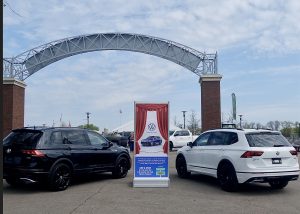
A pair of Tiguans flank the entrance to the Twin Cities Auto Show, at the Minnesota State Fairgrounds.
By John Gilbert
SAINT PAUL, MN. — As I drove around some of the interior streets of the mostly-deserted Minnesota State Fairgrounds in a remarkable new Volkswagen ID.4 that can only be described as electrifying, an inescapable thought hit me. The annual Twin Cities Auto Show and the Minnesota State Fair, were two Minnesota institutions that were among all the things cancelled because of the coronavirus pandemic in the past year. But brilliant ideas can arise out of such unfortunate circumstances.
That is the case this year — or at least this week — when any interested Minnesotans can act hastily and capitalize on both before May 23. No, the state fair hasn’t been moved from fall to the beginning of summer, but the auto show has moved from the wintry throes of mid-March to mid-May by taking over the spacious state fairgrounds from May 15 through Sunday, May 23.
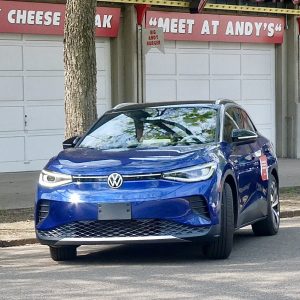
The ID.4 is Volkswagen’s new all-electric compact SUV, with power, range, technology, and affordably prices about $40,000.
That is the reason that I was able to get a brief and impromptu drive in the new all-electric Volkswagen ID.4, although the usual advantage an auto media guy might have over the normal consumers is eliminated because anybody can sign up to test drive any of assorted electric vehicles that are not only on display but parked in position where official chaperones can accompany you on a mile or two drive around the city within a city that is the fairgrounds.
It turns out, the coincidence is that the official “car of the show” this year is the Volkswagen Tiguan, which is an interesting choice because right during this week, Volkswagen held a Zoom introduction of the new Tiguan Allspace, a redesigned pair of SUVs that are sure to become big sellers. A couple of the current Tiguans are paried under the arches at the north entrance to the show at the fairgrounds.
But while the Twin Cities dealers put on the annual show in Minnesota, and allow all sorts of customized and detailed specialty models that a manufacturers show such as Detroit, Chicago, Los Angeles or New York would never allow, and they continue to push hard for big trucks and SUVs, insisting Minnesotans prefer those to haul trailers to cabins, there is no overlooking the charge — you should pardon the expressiuon — toward electriic vehicles (EVs).
Another irony of the whole scene is that while there were all sorts of fabulous big trucks all over that segment of the expansive fairgrounds grounds, Ford was unveiling its new Lightning, resurrecting the name to define its new all-electric model of the top-selling F-150 pickup. There were none to be found, nor were there the Tesla pickup, or the new GMC electric pickup. But they’re coming.
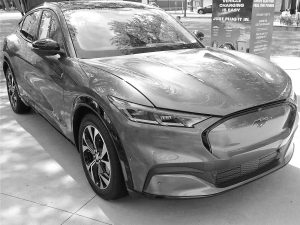
Ford stopped making cars, other than th eMjustang, but it cleverly made a sleek 4-door electric model called the Mustang-e.
Around various corners there were some interesting new vehicles, and we wanted to spend a couple of hours examining them. But the electric cars stole the show. Ford has several of its new Mustang-e models, all of which look better in person than in pictures, and you could make a special trip to the Ford exhibition to sign up to drive one of the low, sleek 4-door Mustangs. Meanwhile, various EVs were on display near the main sign-up booth where you can choose which one you want to drive, and after a short wait has a short line and then you get a call when your turn is due.
Available when we were there were a few high-tech hybrids, but there also were some pure EVs: Kia Niros, Mitsubishis, and the one I was waiting for, the Volkswagen ID.4.
First advice is to be prepared for a surprise. Electric power hits full torque at 0 RPMs — as in, zero — which is why they are so swift taking off. The battery packs add weight, but if placed right can enhance weight distribution and actually make the heavier car handle better.The VW ID.4 we drove had its engine in the rear, and was 2-wheel drive, with those 2 being the rear wheels. The coming model with all-wheel-drive will be a huge hit in Northern Minnesota.
The new VW ID.4 is a high-styled compact SUV that is out now, and it looks sleeker and more stylish than everything from the VW wagons to SUVs.
After I climbed behind the wheel of the ID.4, the fellow assigned to keep signees waiting their turn for the ID.4s got into the passenger seat and my wife (and assistant) Joan climbed into the spacious rear seat. This was not a normal VW, which I could tell as soon as I got behind the wheel. You don’t need a key, you don’t even need to start the engine, because there is no engine.
You just grip the wheel and go. When it’s electric power that is moving your car, it’s a “motor,” not an “engine,” thank you.
“How do I shift?” I asked. Easy. Just twist the end of the knob protruding fro the right of the steering column. Twist it this way and you get Drive, twist it that way, Reverse. And in the middle is Neutral. To put it in Park, you stop, then push in the knob on the tip of the same stalk.
“You’re all set to go,” our guide said. I turned the steering wheel, pulled out, and stepped on the “gas” pedal, and zip, we were off. Silently. He gave us strict directions around the fairgrounds streets, stopping here, turning there. “And when you get to that stop sign, take off as fast as you want,” He said. I wanted. I stepped hard on the pedal anticipating what would happen. Zap! We took off swiftly, but silently. The ID.4 steers and handles well, and it is really fun to drive.
My test-drive was brief, but it was one of several you could sign up for if you visit the show at the fairgrounds. With any luck, this week’s show will start a trend, and move to the fairgrounds every year henceforth. Much better timing than mid-March, the same week as the state hockey tournament.
The idea was to bring in all the new cars and trucks and SUVs the industry has to offer, and place them strategically inside the fairgrounds. Naturally, it wouldn’t take up that much of the fairgrounds, just a couple small areas near the grandstand.
The best idea was to invite a few concessionaires. Yes, if you love going to the fair, one of the main reasons might be the food. You can compare Pronto Pups and Corn Dogs, because they have both open. And Sweet Martha’s hot chocolate chip cookies with ice cold milk, as well as a few other concession stands. Although, once you have corn dogs and hot cookies, who cares about the other stuff?
But we do care about the cars, and I was pleasantly surprised at how many people were lined up at the gates to get in as soon as the Saturday morning media-day hours ended and the show opened.
There is one other great idea involved: Free Parking! Yes, if you drive onto the grounds and follow the gents in their outfits, waving flags, you will be directed to a couple huge free parking lots, from which you can stroll into the grounds and do some serious car scrutinizing.
The electric cars and high-mileage hybrids blend in well with the normal vehicles, but this is the year of transition. Some of the more conservative Twin Cities dealers guys may not be too thrilled about it, but you can’t stop progress. A couple years ago, show decided to take a big truck and SUV focus, because we buy more of those on a percentage basis than anywhere else in the country, to haul our boats and camping gear. As all the ideas in the world go, that was one of them. Reaction was OK, but even then customers were mostly curious about the newest alternative energy vehicles and the approaching electric-car revolution.
There has even been grumbling that our Minnesota dealers will never sell electric vehicles, because they can’t get enough of them, and the infrastructure isn’t there. But it’s coming. Most electric vehicles are sold in California and on the coasts, but Governor Tim Walz has the right idea to go after the infrastructure for Minnesota. People who fear the EV arrival don’t realize how much demand there already is for them. Charging stations and high-speed charging stations are already in place or going in, right here in flyover land.
Beyond that, battery makers are making enormous technological advances, and automakers are building higher tech cars and SUVs and, yes, pickup trucks, to catch up.
Toyota’s traditional lead in hybrid technology is now being swarmed by competitors who are vaulting right past hybrids to pure EVs. Tesla, of course, is up front in that chase, but the onrushing concepts of Hyundai, Kia, Honda, Volkswagen, Audi, Nissan, Mazda, Volvo, Jaguar, Mini, and Fiat are coming on fast.
That’s why the Twin Cities show is so timely. In a nod to past tradition, the “Car of the Show” this year is the Volkswagen Tiguan — a compact but conventional SUV that is sturdy and durable for family use, and it leads in perfectly — if unintentionally — to Volkswagen’s incredible future.
Volkswagen is a German company that makes some of the most durable and potent and efficient engines in the world. The company’s 2.0-liter 4-cylinder is good as it sits and fantastic if you turbocharge it. It has been tweaked to power the GTI hot-rod hatch version of the Golf, and it also can be used in the Jetta 4-door, the Passat midsize near-luxury sedan, and on into the Arteon, and the SUVs like the Tiguan.
While also building a strong and unique VR-6 when more power is needed, VW has built a smaller 4-cylinder, at 1.4 liters, that is both adequately powerful with a turbo and extremely fuel-efficient in, say, the Jetta.
Every time you climb into any Volkswagen, you eel as though you’ve surrounded yourself in solid, German engineering. They are strong, durable and can be tased around like sports cars, if you choose.
The new design of the Jetta places it among the bsst entry-level sedans, and it will never feel entry level. The Passat is a willing challenger to any highway-cruising near-luxury car, at a bargain price. And the people’s-car company also owns Audi, which is more of a luxury car-maker, and also advances the corporate engineering and efficiency. The new Audi e-tron is the sleek sedan you see being advertised on satellite TV broadcasts of the Stanley Cup hockey games.
The Tiguan was always a bit stubby, so VW elongated it and added interior room and seating, and for the last couple of years they continued to make the shorter one, too. You can get it with the 4 or V6, but drive one with the 4 before you decide on the larger engine. And the new Allspace is about to hit the market.
All of that is worthy of columns and reviews, but this year, the move is electrifying. Volkswagen, like General Motors, Ford, Jeep, and everybody else, is looking for the most efficient way to go electric. Volkswagen has found the answer with a new and progressive technical company that is building a unique new battery pack and propulsion system, and it is going to build a futuristic plant near Silicon Valley in California for its new facility. Someone asked how they could afford such a fabulously expensive facility, and they said they had strong backing. Someone asked who their chief backer was, and they said, “Volkswagen.”
After the new all-electric ID.4 gains traction, so to speak, VW also will have its new Golf-e and a new version coming of the Microbus in all-electric form. The concept is that the new battery system will consist of low, horizontal plates that can be stacked on top of each other, resulting in tremendous range — over 300 miles on a charge, I’m told — and incredibly fast recharging time.
So I enjoyed the Twin Cities show, seeing the Mazdas, the Lexus models, the new Hyundai Tucson, which isn’t introduced yet, and the new Nissan Rogue, also yet to be introduced, as well as the Mitsubishi comeback vehicles, like the Outlander, Outlander Sport and Cross-Sport. Some of those will be electric, too.
Mazda’s new idea isn’t out yet, but should be a super-hybrid, with a battery pack that will run the car for a lot of miles, and then a “range extender” — which is auto-speak for the gas engine in a hybrid — that will be the return of Mazda’s legendary little rotary engine. That will be a neat stepping stone toward all-electric.
We also know that there are pickup trucks coming from General Motors and Ford, and next Hyundai, that are propelled by electric power. They’re coming, and we should be embracing the clean-air, low-cost travel we’re going to be faced with.
As of now, the Twin Cities car show has information noting the presence of the VW ID.4, the Mustang-e, the Niro, Outlander, Volvo XC-40 Recharge, Jaguar I-Pace, Mini Cooper-E, Nissan Leaf, Porsche Taycan, Tesla S and Y models, Auto e-tron, BMW i3, and the Chevrolet Bolt.
That’s a pretty good start, and I’ve driven several of them. But I hadn’t driven the VW ID.4 before last weekend, and now I want one for a week, even more. For a promotion, maybe they should offer free corn dogs with it.
Equinox gives Chevy a Premier compact SUV
Filed under: Weekly test drives, Features, Autos
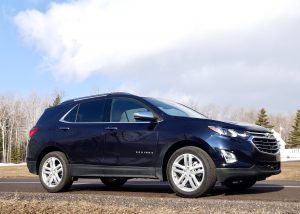
By John Gilbert
As the dreaded Coronavirus was about to foul up our springtime of 2020, I was just getting ready to enjoy the start of the NCHC college hockey playoffs, where the University of Minnesota Duluth was about to start its bid for a third straight NCAA title. I also had just finished a week-long road test with a 2020 Chevrolet Equinox Premier, a nicely styled and nicely sized SUV that is aimed at challenging the best of the compact SUVs — the RAV4, CR-V, Escape, Rogue, Cherokee, Tucson, Forester, and — my favorite — the Mazda CX-5.
Several things happened that caught me by surprise between my test drive week and the actual writing of this review. First, I was very impressed with everything about the Equinox, surprising because Chevrolet has seemed powerless to avoid fading away from the best of the rest. Second, I had read a couple reviews in car magazines, and my impressions of the previous Chevy SUVs and those test reports combined to make me apprehensive at best about the Equinox.
Another thing that happened was that the Federal Government has been very harsh — at least in its “Fearless Leader’s” dealings with General Motors. GM chief Mary Barra seems to have become one of President Trump’s favorite targets for his hit-and-run twitter/press briefing cheap-shots, dating back to his early days in office when he assumed all U.S. car-makers could simply shutter their overseas manufacturing plants and return to Detroit.
The most recent hit came after the last weekend in March, when the Coronavirus was tightening its deadly grip on all corners of the U.S., and Trump was live on television saying that GM had been dragging its feet when it came to aiding the nation, which was something he had become accustomed to in dealing with Barra.
It struck me as curious, because in the week before that outburst, I had read an account of how GM had worked out a partnership with Ventec Life Systems, a small company that makes ventilators, which have become so vital to helping afflicted patients keep breathing. GM engineers collaborated with Ventec on how they could convert a GM plant and find the materials to help Ventec make 10 times more than the 200 ventilators it normally makes each month.
In a matter of four days, the plan had been mobilized. And then Trump took his private little stage on Friday, March 27, 2020 and said he had activated an emergency plan that would force GM to help.
To their credit, although reportedly outraged, GM officials made the judicious move to keep on working around the clock to create ventilators without any comment on the accusation, and resisted making the link that Trump might have been hustling to attain his daily dose of praise, figuring if he hurried, he could take credit for forcing General Motors to start doing what it had already been doing for most of a week. Shortly after criticizing difficulties with GM “under Mary,” Trump cut off a daily press conference question about GM’s involvement and praised the company and its chairman for a “great job” of helping, stopping predictably short of apologizing for his awkward statement three days earlier.
Ford and FCA (Fiat Chrysler Automobiles), incidentally, also have been helping the cause. Ford, for example, has partnered with Minnesota’s 3M, and respirator-maker GE Healthcare, to simplify the process by which GE Healthcare can greatly increase its production of respirators, aiming at 100,000 per week.
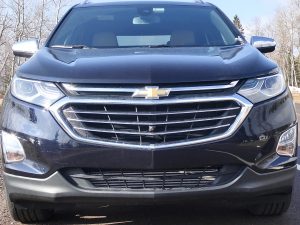
Meanwhile, back out on the road, I found the Equinox a far more worthy family hauler than a Motor Trend review of it indicated. Those car magazine hot-rodders tend to pound cars much harder than normal consumers might, so when they ripped the Equinox for not cornering like a Miata, I took it with a grain of salsa.
In testing a vehicle’s handling, what one driver might find too-soft in corner swaying is another driver’s comfortable ride; just like one driver’s firm and solid cornering might be another’s harsh and uncomfortable ride. The Equinox came in eighth and last in the Motor Trend comparison, but Chevrolet needn’t feel too bad; the magazine didn’t even bother to include a Ford Escape — another compact SUV I like a lot.
In the magazine’s test, the CR-V was first, the Mazda CX-5 second. Without question, the Equinox is no race car, although the magazine’s criticism of the car’s safety devices and poor-quality interior ingredients might be mostly due to the fact that it was not up to the standards of my test vehicle — which was the optional Premier, with its top-of-the-line features.
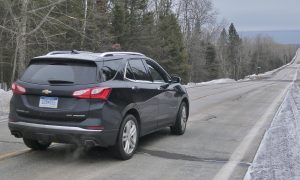
It was far better equipped to corner and display directional stability, and its numerous other interior and safety parts were much appreciated. The leather seats, lane-departure alert, lane-keep assist, rear-park assist and camera, heated and ventilated front buckets, heated steering wheel and adaptive cruise control are significant upgrades for a loaded, as-tested sticker of a reasonable $38,545.
Power in the test Equinox came from Chevrolet’s new-age 2.0-liter turbocharged 4-cylinder engine with a smooth-shifting 9-speed automatic transmission, while many competitors have a CVT (continuously variable transmission) that tends to drone and frustrate in equal parts. The 9-speed worked smoothly in coordination with the all-wheel drive in the Equinox.
The LED head and tail lights and the keyless start system are also nice things sometimes rare on compact SUVs.
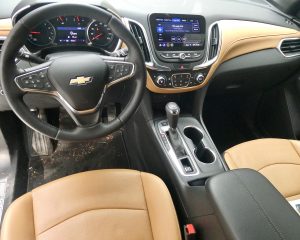
Each time I walked up to the Equinox, I was impressed by its styling, with its swept-back lines that blend the rear pillar into the rear of the vehicle. and I think it stands out from the pack because of that.
Chevy also makes the Traverse, which is a little bigger, but very similarly styled, with a V6 for power and three rows of seats. That makes it your choice: if you want and need a larger vehicle with a larger engine, or can get by with the agility of the smaller Equinox and appreciate improved economy. It was perfect timing that put the Equinox Premier with its push-button-activated all-wheel drive came into my hands at the precise time when it seemed that General Motors and Chevrolet needed and deserved some defending from unfair criticism from the White House, coupled with my impressions of the vehicle itself.
It has been a Chevrolet tradition when it makes cars to offer a top-of-the-line model, a mid-range model for features and expense, and a less-expensive bargain model that may be without a lot of appreciated features. Other companies cut corners similarly, but nobody else is guilty of stripping the true value items from its less-expensive models. That’s one area where the Japanese, Germans and Koreans are far ahead.

The Premier version of the Equinox matches most competitive compact SUVs, although the audio system was nothing special. It did have wireless charging for cell phones, and the optional OnStar system adds security. In its quest to load up remote switchgear on the steering wheel, though, I found that every time I cranked the steering wheel to get into or out of a parking spot, I inadvertently hit the little switch above the grip location and became conditioned to cancelling out the OnStar lady as she attempted to plan my rescue.
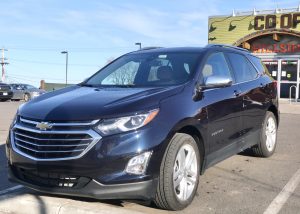
Over the weekend, various car dealerships hurting for sales came out with enormous ad campaigns. I caught a Chevrolet ad that screamed out about the 2020 Equinox being offered for 0-percent down, and 0-percent interest for 80 months, with the company paying the first four months-worth! That made the timing still better, because it seems as though Chevrolet is virtually giving away its Equinoxes.
Just remember, you may like it a lot or dislike it completely, but it all comes down to a driver’s opinion. And keep in mind that not all compact SUVs are created Equinox-ly.
Minnesota’s big show promotes Truck Summit
Filed under: Features, Autos
By John Gilbert
Trucks, trucks and more trucks. The Minneapolis-St. Paul Auto Show has trucks of all shapes and sizes, from monster diesels to compact crossovers, and since the definition of a truck has been shattered by the new and expanded definition, we’re going to have to concede that the show promoters were correct in claiming it deserved to hold its “Truck Summit” because 82 percent of all vehicles sold in Minnesota are trucks.
That can include the boatload of compact crossovers, which actually make the most sense as we transition fully from sedans to trucks, but the full array of trucks are pickups, SUVs, crossovers on down to tiny vehicles with all-wheel drive. But to many Minnesota buyers, trucks mean boat-hauling pickups.
They called it a Truck Summit, as if show promoters, who are operate the big Convention Center extravaganza through this weekend, March 14-15, have an exclusive here, with trucks taking over for cars in daily lives of normal consumers. Of course, trucks are taking over everywhere in the U.S., although that 82-percent figure is pretty compelling.
The fascinating part of our fascination with all things truck is that every manufacturer claims superiority, sometimes of the same statistic in the same critical area of comparison. You will hear Ford proclaim the F-150 the leading seller in the country, and you will hear Chevrolet claim the Silverado is the top seller in Minnesota, while the folks at Ram just sit back and smile about their own success in the marketplace and their new designation — by no less than the cars.com website, which declared the Ram 1500 pickup its “Luxury vehicle of the year” for 2020.
But the truck folks also all claim the unregulated advantage as having the most towing capacity, the largest hauling tally, and the most power of all. Now, they all can’t be right of course, but we’ll leave the hotly contested place up to the consumers who can come to the auto show, at the Minneapolis Convention Center, and kick the tires of every car and truck sold in the area, and make their own decisions.
We at NewCarPicks.com will just try to offer the guidance of having driven most, if not all, of the new trucks, and cars as well.
The National Truck Summit kicked off the auto show by putting on over three hours of discussions with industry executives. Jay Sacket talked first; he’s the executive program manager of Toyota. A panel discussion followed with Sacket joining JATO Dynamics president Matt Weiss, and Erin Klepaski, senior vice president of Auto Sales Alliance. Next up was Tim Stoehr, regional product line manager of Ford, then Marjk Boyadjis, from Global Technology. And finally, interiuor designer Ryan Nagode from Ram.
The fact that trucks are taking over our hearts, as well as our bank accounts, is not news. It was news 10 years ago, and 5 years ago, when it was first challenging sedans in sales, and long before we see the figures that show the RAV4 now beats out the Camry and Corolla as Toyota’s top seller, or that the CR-V tops the Accord and Civic as Honda’s leader.
The news now is that while trucks — and SUVs — hold a clear majority over cars in total sales, the figure of 82 percent in Minnesota is shocking enough to surprise even my good friend David Boldt, from Texas, who is from a state where there are dealerships that sell only trucks, with no cars. Boldt wrote that no other state comes close to Texas in the purchase of trucks, with the Lone Star State selling over 100,000 Ford F-150s, in fact.
I’ve always maintained that our pickup culture is traditional. Chevy guys don’t buy Fords, Ford guys wouldn’t consider a Chevy, and while they’ve been arm wrestling, Dodge’s Ram brand has made the biggest impact on the truck market in the past year.
The latest redesigned Ram 1500 stormed past the Silverado for the first time ever to stand a solid second only to the F-150 in pickup sales and stature, and since all of the Big Three’s big trucks are similar enough in towing and hauling to all claim superiority, there must be something special about the Ram. And there is. It’s the interior.
When Fiat took over Chrysler to form FCA, for Fiat Chrysler Automobiles, the Italian company pushed a stylish flair through the entire corporation, and while Jeep has benefitted greatly, Ram trucks have soared with interiors that rival luxury cars in their attention to detail and the refinement of fabrics and trim features.
There is still time to take a drive down Interstate 35 and take in the auto show, and to whet your appetite, we’re supplying an array of photos of what you might want to check out.
First off, the Ford pickup remains the king, and we’re showing the Super Duty, bigger than full size, as the king of the kingdom. The GMC 2500 DuraMax diesel — the one with the trick tailgate that features a drop-down step for easy access, the center-piece for folks in the TV commercials to have their jaws drop in amazement — meaning they haven’t seen a Ford in the past decade, which has had that same tailgate feature and includes a locking upright post as a grip handle. Next up is the Ram, and we’re showing the monster Ram with dallies and all and a 6.4-liter Hemi. With it, you’ll see the rich leather interior of the Longhorn trim package, flanking the foot-tall navigation screen that is the size of a full iPad and just as useful.
The Chevy Silverado prances into view in bright red, looking good even if it has slipped to third place among the Big Three.
Midsize trucks have made a big comeback, too, and the reliable Toyota Tacoma remains a favorite for fitting just about anything you might need a truck for. This one is the TRD-Pro, which is a cut above the excellent TRD, and you can tell it by the huge snorkel that rises up along the right front pillar to remind you that when you thrash through desert sane, you needn’t worry about sand
getting into the air intake. Of course, it also might work in snow, and whether it does or doesn’t, I thought the picture after a snowstorm was worth it.But don’t overlook the very competitive Honda Ridgeline, as well.
Where, in your truckscape, does the Jeep Wrangler fit? Is it a car, a truck, an SUV, or a unique vehicle capable of off-roading to places no sane driver would take another vehicle?
Cadillac brings out the XT6, a stylish SUV-like wagon with V6 power. For power, the Dodge Durango is a large SUV with SRT Hemi treatment for high power in a versatile vehicle. And Ford’s newest versions of the Explorer SUV and the compact Escape SUV also make the show.
And just so you see we haven’t forgotten traditional excellence, here are a pair of newly redesigned Range Rovers — the sleek-roofed Evoque, and the smooth Velar, both expensive, but loaded with interior features that prove, conclusively, that trucks have become the new luxury sedans.


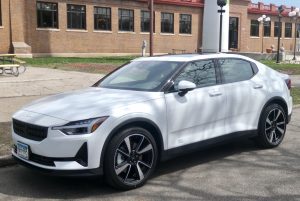
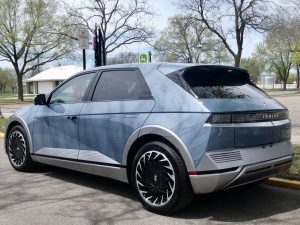
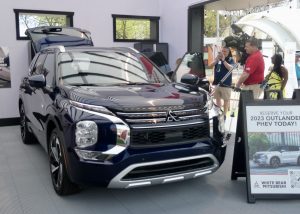
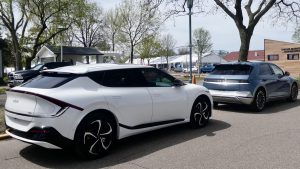
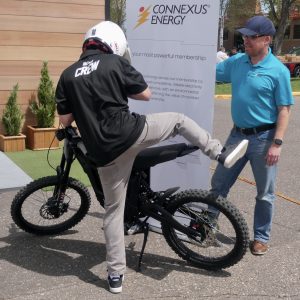
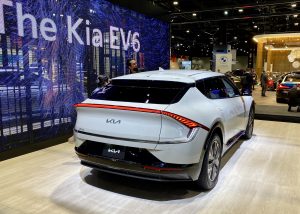

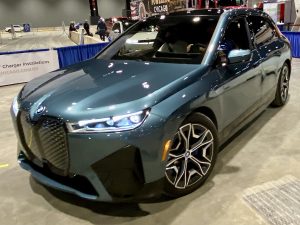
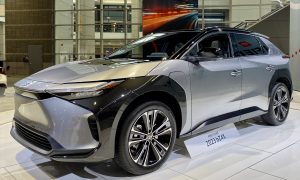
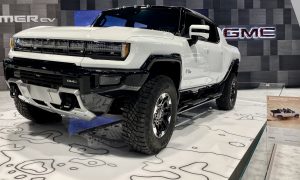
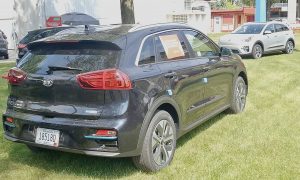
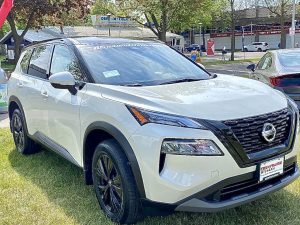
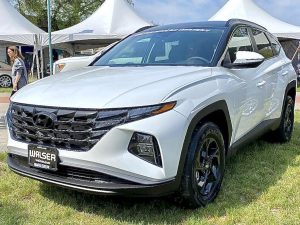
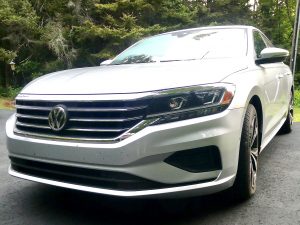
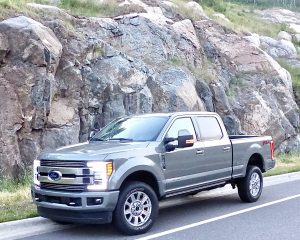
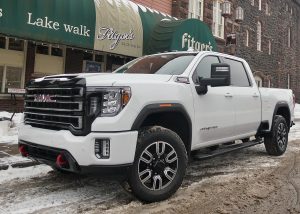

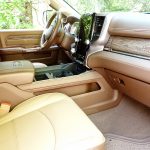
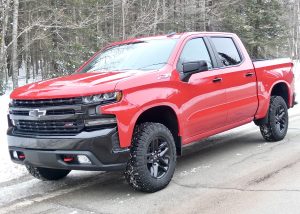


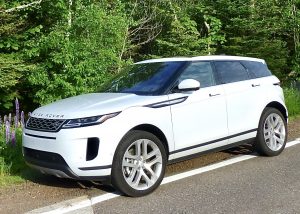
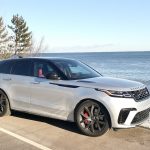
 John Gilbert is a lifetime Minnesotan and career journalist, specializing in cars and sports during and since spending 30 years at the Minneapolis Tribune, now the Star Tribune. More recently, he has continued translating the high-tech world of autos and sharing his passionate insights as a freelance writer/photographer/broadcaster. A member of the prestigious North American Car and Truck of the Year jury since 1993. John can be heard Monday-Friday from 9-11am on 610 KDAL(www.kdal610.com) on the "John Gilbert Show," and writes a column in the Duluth Reader.
John Gilbert is a lifetime Minnesotan and career journalist, specializing in cars and sports during and since spending 30 years at the Minneapolis Tribune, now the Star Tribune. More recently, he has continued translating the high-tech world of autos and sharing his passionate insights as a freelance writer/photographer/broadcaster. A member of the prestigious North American Car and Truck of the Year jury since 1993. John can be heard Monday-Friday from 9-11am on 610 KDAL(www.kdal610.com) on the "John Gilbert Show," and writes a column in the Duluth Reader.